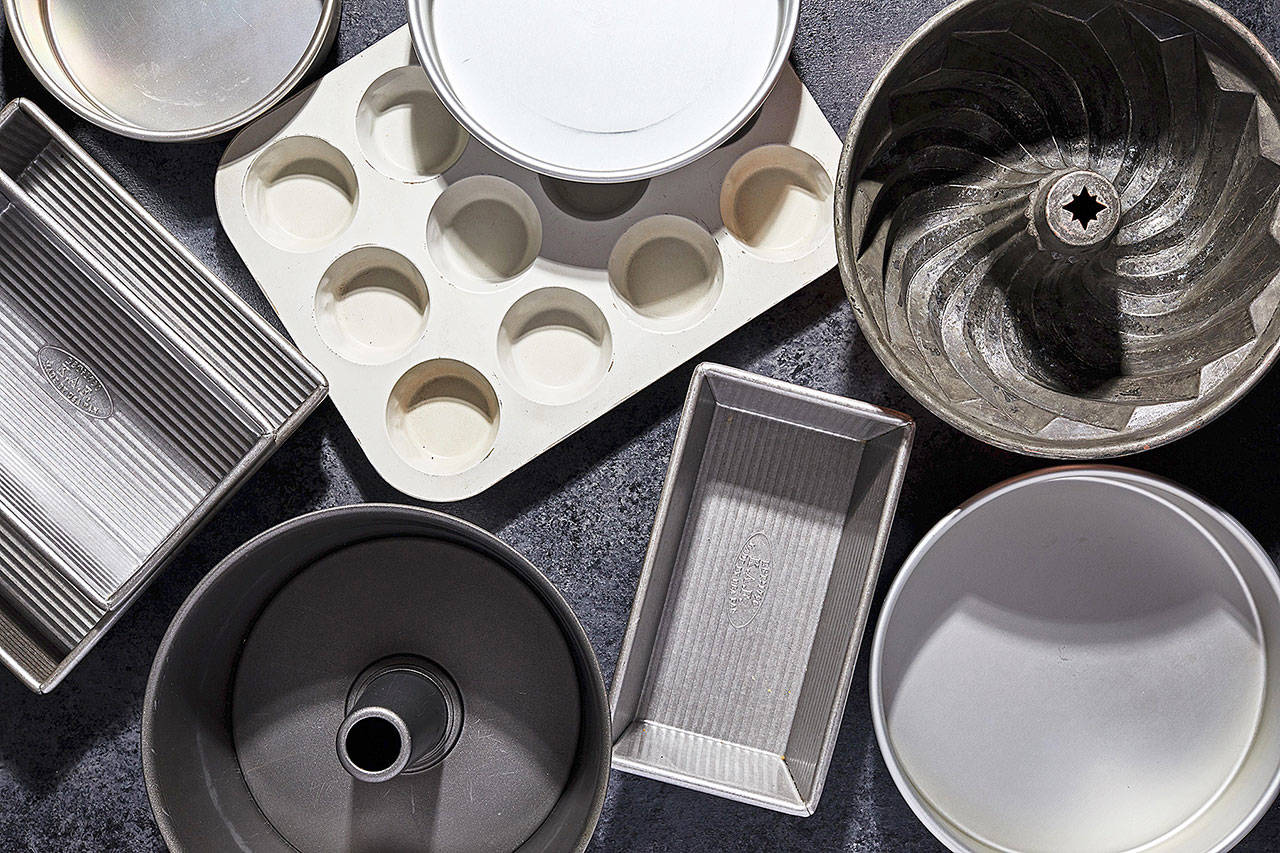By Becky Krystal / The Washington Post
Rule No. 1 of baking is (almost) always this: Follow the recipe.
As someone who shares recipes and frequently helps troubleshoot them, I’m a firm adherent to this adage. But … some rules are meant to be bent, if not broken.
I’m not suggesting you should start making willy-nilly changes to whatever recipe you like. (And if you do, please don’t email me to complain!) However, there is some built-in flexibility, especially when it comes to pan sizes.
Here are some tips if you find yourself inclined to bake in a different size pan than what a recipe calls for.
Think about whether the recipe should even be changed. Not every baked good is amenable to alterations. Brownies are pretty forgiving, says cookbook author Rose Levy Beranbaum (“The Cake Bible,” “The Baking Bible,” “Rose’s Baking Basics”). The batter is not finicky, and because you’re not worried about them rising much, you can easily use a 9-inch pan instead of an 8-inch or vice versa. Following the same logic, blondies give you wiggle room, as do denser fruit cakes, pound cakes and even coffee cakes. Using a different size cake pan for a cheesecake (within reason, as in an inch, which is a bigger disparity than it sounds), is probably also OK, Beranbaum says. Delicate sponge cakes, such as genoise or angel food, which have been calculated to work in a specific shape pan for a specific amount of time to generate a specific amount of lift, are not as amenable to changes. On the other hand, changing a typical layer cake into cupcakes is pretty safe, and quick breads are fairly easily adapted into muffins.
Do some evaluating. The most important thing to consider when changing a pan size is volume, Beranbaum says. Note: I said volume, and not surface area. Surface area only takes into account the, well, exposed surface of the pan, as in length and width. That can be useful when thinking about using pans of similar height, especially with foods (i.e. brownies) that don’t rise much. But we’re in a three-dimensional world here, so if we’re talking about larger amounts of batter and pans of different heights, you should also take into account how tall a pan is, which along with length and width, affects how much batter a pan can hold. If you can already feel your eyes glazing over with the prospect of math, unglaze, please! There are plenty of handy reference charts and conversion guides in books and online that you can use to help decide whether your desired pan is comparable to the one a recipe calls for. You can always verify or measure for yourself, Beranbaum says, by seeing how much water a pan holds.
Pay attention to shape, too. Even if a pan’s volume is the same, the shape might affect whether you can use all the batter or not. Over on Epicurious, cookbook author Alice Medrich says heavier batters (quick breads, for example) can come 2/3 of the way up the sides of a pan, but lighter, spongier cakes need more room to expand lest they overflow. Stick with having the pan half full for those types of recipes, as well as when you’re just not sure about how a recipe will act in a different pan. Extra batter can always be baked off as cupcakes, muffins or mini-loaves.
You don’t necessarily have to stay within the same shape of pan, though. I recently cut a cake recipe in half to change it from a Bundt cake to a single loaf. Both pans are fairly tall to begin with, and it was just a matter of shrinking the amount of batter to match the lower volume.
Adjust the recipe as needed. Don’t expect to change a pan size and not have to change anything else in the recipe. Depending on whether your layer of batter is shorter or taller, you may need to reduce or increase the baking time. Cupcakes and muffins might be done in as little as half the time as their larger counterparts. When testing Mary Berry’s Orange Tea Bread, I discovered that a 9-inch cake finished baking 15 minutes (25%) faster than the 8-inch version (and even then was a bit dry). If you’re going from a shallower pan to a taller one, Beranbaum says you might need to add a bit more leavener (maybe ¼ teaspoon more baking powder, for example) to ensure the cake can rise higher.
If you’re dead set on going with pans of different volumes, you will need to scale the ingredients up or down. Recipes that call for a 9-inch square pan are easily adapted for a 9-by-13 pan if you increase the ingredients by 50%. Even a 1-inch diameter disparity in a cake pan can make a difference. Your 8-inch cake baked in a 9-inch pan will turn out thinner (and potentially drier), Medrich says, so consider scaling up the ingredients by 25% to compensate.
Because your timing is likely to change with any one of these adjustments, it’s important to use a recipe’s other cues to determine when your baked good is done. That includes color, texture (is the cake set? does it spring back a little when pressed?), whether it has pulled away from the sides of the pan, and even temperature, if you’re inclined to be precise and use an instant-read thermometer on your cake or bread. In other words, use all your senses and kitchen smarts, and you’ll be well on your way to success.
Talk to us
> Give us your news tips.
> Send us a letter to the editor.
> More Herald contact information.

























